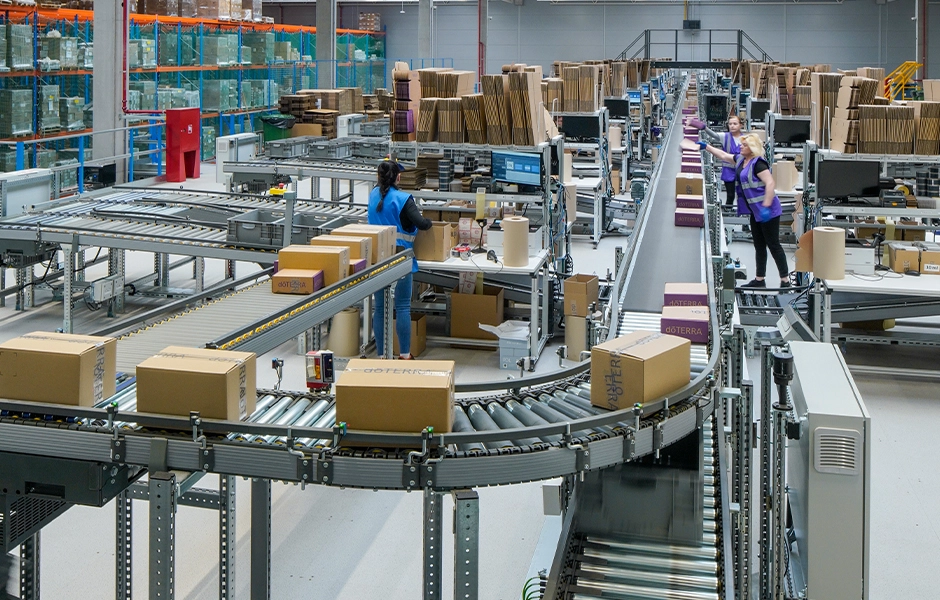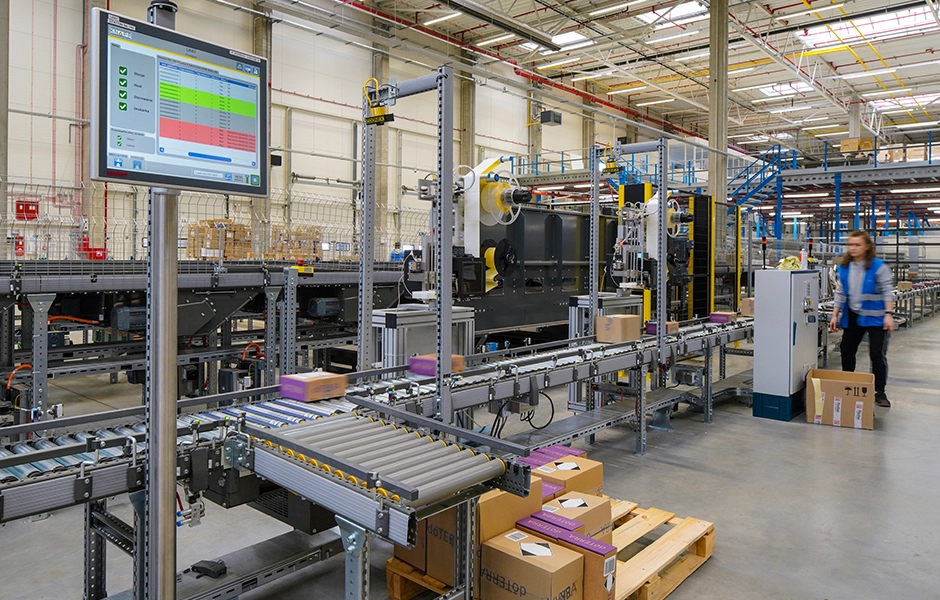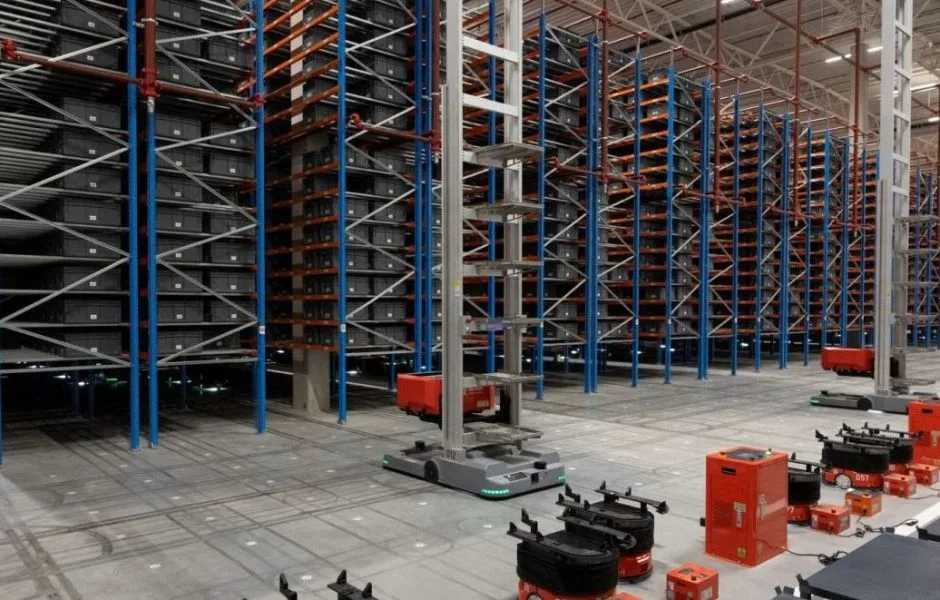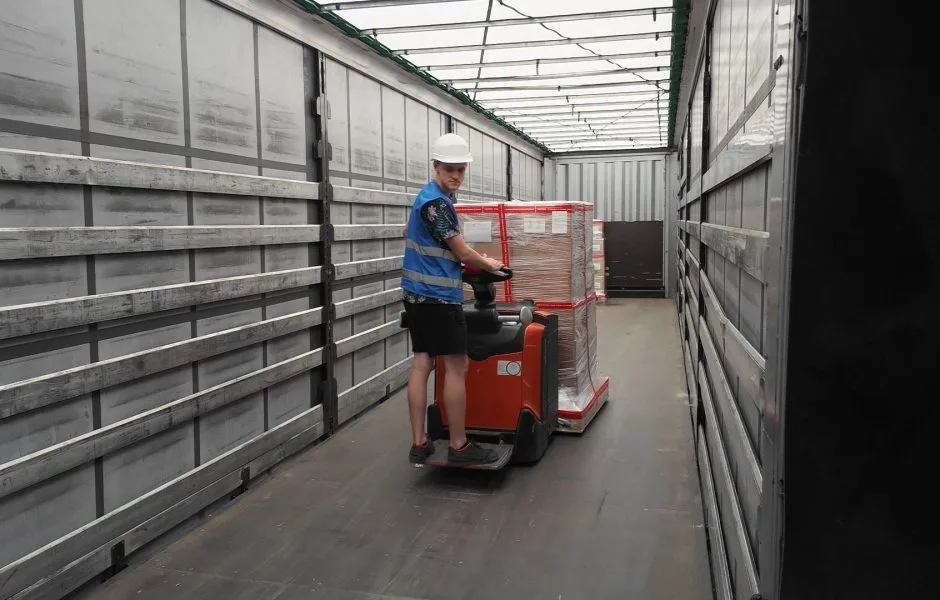How Retailers Can Scale Order Fulfillment to Deliver Exceptional Customer Experiences

A great e-commerce experience depends on fast, efficient order fulfillment—without it, you can’t meet customer expectations. As online retail grows, scaling isn’t optional; it’s survive or lose out to faster competitors.

Every retailer needs a strategy to scale order fulfillment, and if you’ve already done so, you still need to be able to expand further as the business grows. Figuring out that strategy can be challenging.
Retailers have two choices: build out and own the infrastructure, staffing, technology, and management of their own order fulfillment centers; or outsource it to a third-party logistics partner that specializes in order fulfillment.
We explore the challenges e-commerce businesses face in scaling, what it takes to scale, and whether keeping it internal or outsourcing it may be the right path for your business.
Why is scaling order management so challenging?
Regardless of their size, there are multiple factors that make it complicated for retailers to scale their order management:
Customer expectations for fast delivery, accurate orders, easy returns. As retailers like Amazon push for same-day delivery, customer expectations for speed, accuracy, and visibility keep rising. Real-time tracking, easy returns, and seamless order updates are now the norm—and every fulfillment glitch shapes how customers view your brand.
Legacy technology that can’t keep up. Many retailers struggle to scale because their digital transformation lags behind growth. The pandemic sped up cloud adoption, but now a deeper integration of systems is needed to support automation. Brick-and-mortar businesses, in particular, face legacy challenges that hinder omnichannel experiences, making order fulfillment slower, less visible, and more error-prone without the right cloud-based tech stack.
Difficulty managing the supply chain. As your business grows, so does the complexity of managing more suppliers and logistics partners. Without clear KPIs, it’s tough to track performance or identify which partners are meeting your needs.
Multiple fulfillment channels to oversee. Omnichannel retailers often use stores as fulfillment hubs, adding complexity to inventory tracking and delivery. Orders may be picked up or shipped, and returns can flow back to stores or distribution centers—making reverse logistics even more challenging.
Unpredictable surges and peaks that keep shifting. The pandemic showed that order surges can hit anytime, while traditional peak seasons now stretch over months. From early holiday shopping to viral trends, unexpected demand puts constant pressure on fulfillment systems.
Competitors that fully automate. Retailers often face sudden pressure to scale when competitors adopt fully automated fulfillment. Manual operations can’t match the speed, volume, or cost-efficiency of robotic systems, putting slower businesses at a clear disadvantage.

Automation at the Radial Europe fulfillment site in Warsaw, Poland
Difficult labour market. Finding skilled labour to staff order fulfillment can be challenging in any economy; however, it’s even harder in the post-pandemic era. Relying on a strategy of quickly staffing up to meet peak surges is not a viable option. The time required to hire, onboard, train, and get new employees up to speed is simply not fast enough to meet peak demands and it is difficult to scale down when the business moves into slower seasons.
Rising costs. Inventory, logistics, transportation, labor, and operations are all experiencing rising costs; these costs go up as the business grows. Trying to keep up with order fulfillment without scaling often drives these costs higher as businesses begin to experience customer churn due to the inability to deliver great timely order fulfillment.
These are key challenges. What is required to scale?
What’s needed to scale order management?
E-commerce businesses often begin with in-house, manual fulfillment, adding staff as they grow. Eventually, they face a choice: build out their own fulfillment network or outsource to experts. In both cases, certain essentials are needed to scale effectively.
Customer experience focused strategy. An effective order fulfillment strategy prioritizes customer experience, both for shoppers and internal stakeholders like suppliers and partners. Scaling requires thoughtful planning to enhance, not harm, this experience. Consider how new technology, automation, or robotics will affect your supply chain, employees, and customers.
Cloud based, integrated technology. Your tech strategy impacts scalability. A strong cloud-based stack integrates inventory and order management with suppliers, vendors, partners, carriers, and your e-commerce platform, enabling seamless data sharing and communication. The cloud offers flexibility, accessibility, and real-time insights, scaling effortlessly with growing data and transactions.
Real-time visibility across the supply chain ecosystem. Meeting customer expectations requires real-time supply chain visibility through integrated data and applications. This enables inventory tracking across suppliers, instant status updates, accurate communication with fulfillment centers and carriers, and seamless order tracking for customers.
Predictive demand forecasting. Traditional demand forecasting relies on historical data and customer behavior estimates. Modern predictive analytics use AI and machine learning to track real-time demand, integrating with order fulfillment to auto-trigger supplier orders based on inventory status. This enhances accuracy, optimizes inventory, and cuts forecasting errors.
Automation and robotics. Automation is driving digital transformation, with robotics revolutionizing fulfillment operations. However, it depends on a cloud-based, integrated system. Robotics enhance order fulfillment using Internet of Things IoT sensors and real-time data to coordinate pick-and-pack and support services.
Streamlined workflows and processes. To scale, you need to simplify and reduce complexity where possible. IIntegrated data and applications streamline workflows by ensuring seamless system connectivity. For instance, linking order management with enterprise resource planning enables automatic purchase orders and approval processes, eliminating manual tasks.

Robot automation at the Radial Europe Groningen site, Netherlands
Trained personnel that understand where human judgement is needed. AI and machine learning are reshaping retail, but people remain at its core. Even in associate-free locations, customers expect human oversight and support. As robotics expand in fulfillment, human roles will still be crucial for setting standards, ensuring quality, and knowing when personal interaction is essential.
Scalable customer service. As order volume grows, customer service demand rises too. Scaling fulfillment and support together ensures efficiency. Customer service must have the same tech investment and automation to manage increased demand effectively.
Predictable, containable costs. A key to successfully scaling order fulfillment is to be able to predict and contain costs. Automation and tech platforms that streamline workflows help do this. Improving operational efficiency also drives down costs.
The next question becomes: is it better to build out your own order fulfillment infrastructure or to outsource it?
Insourcing vs. outsourcing order fulfillment
Whether you choose to insource or outsource, scaling order fulfillment will depend on key factors.
Insourcing order fulfillment
It may make sense for you to build out your own order fulfillment if you:
- Are a major retail enterprise that owns all of its operations and has capacity to scale as needed
- Have the time to incrementally scale order fulfillment by acquiring land, building or securing and remodeling facilities; ordering and implementing the physical, technological, and automation infrastructure; and hiring and training employees
- Discover you do not need to scale operations beyond one facility if you automate your current operation and are confident you will be able to handle the demand
- Are uncertain of your growth strategy or are in the process of selling or merging your business with another company
If those criteria do not define you, outsourcing may be the best strategy.

Outsourcing order fulfillment
Outsourcing your order fulfillment to a trusted logistics partner is often the fastest, and most reliable way to scale order fulfillment operations, with the least amount of risk.
An order fulfillment partner, like Radial, brings all of the requirements to scale in one solution and manages and operates your order fulfillment for you. Because they have deep expertise in order management, and invest in the latest technology and automation, they are able to achieve high-levels of performance for you immediately. They also have robust relationships with carriers and suppliers and handle every aspect of order fulfillment, at a predictable cost.
Radial offers complete order fulfillment services and solutions, so you can feel confident that your e-commerce business will be able to scale up or down according to demand and customer experience will remain positive.
Contact Us (EUR)
By submitting this form, you agree to our friendly privacy policy.
